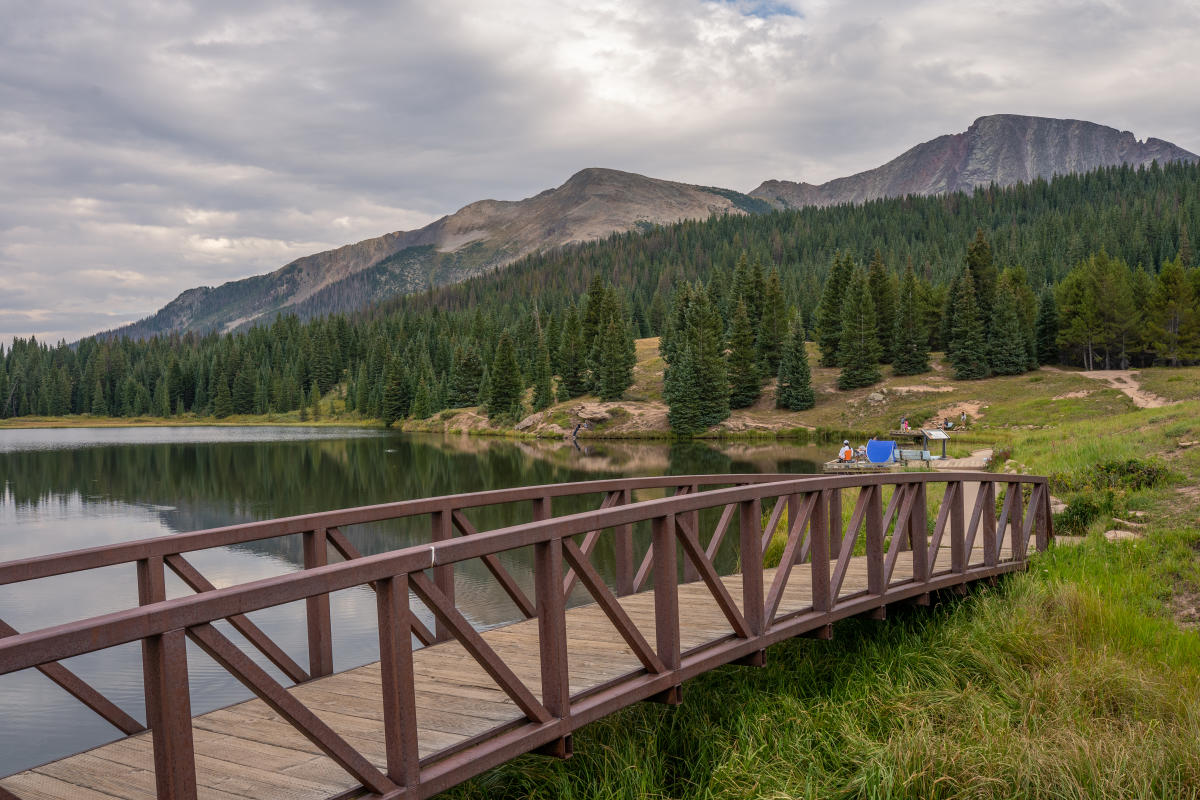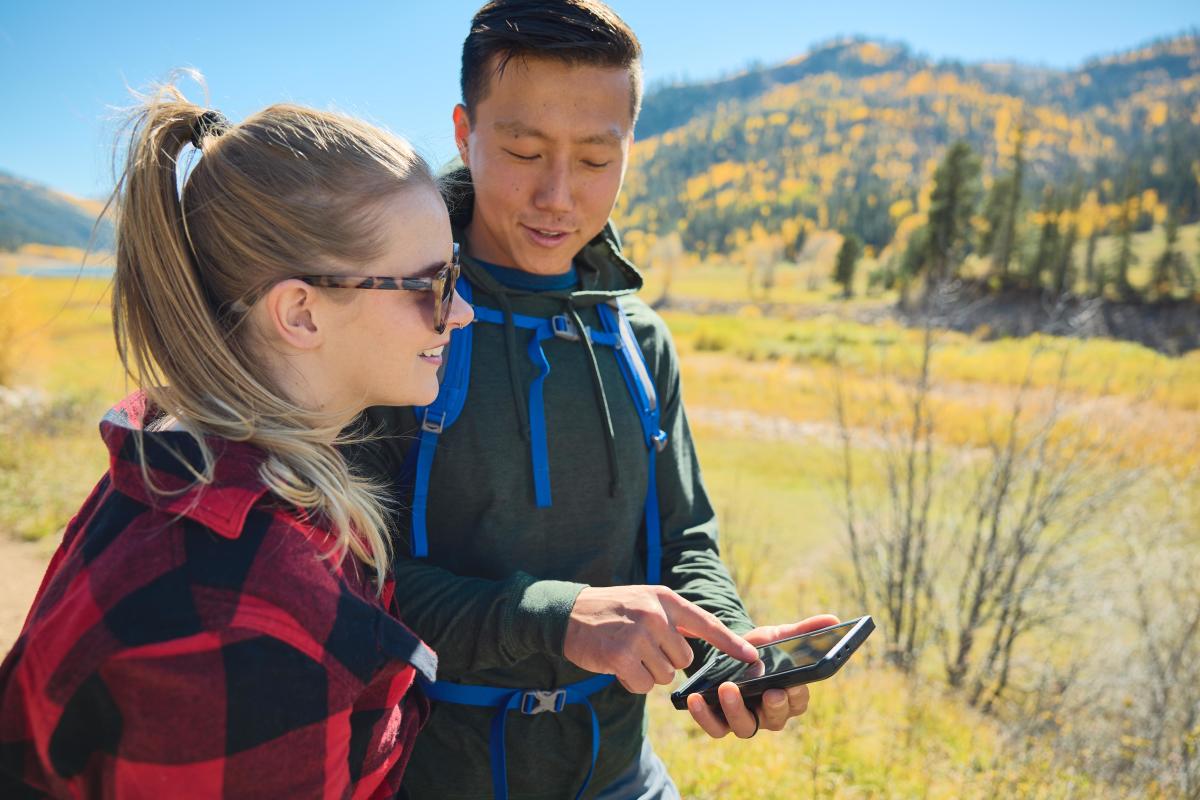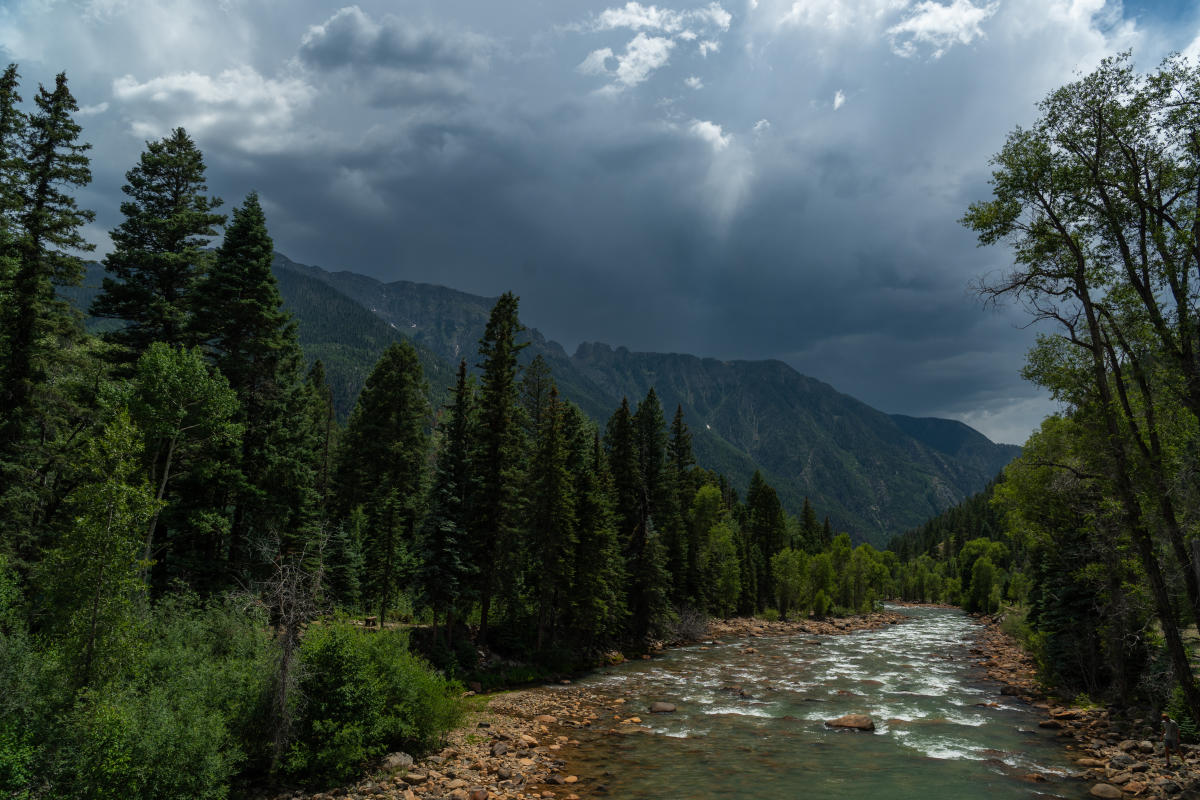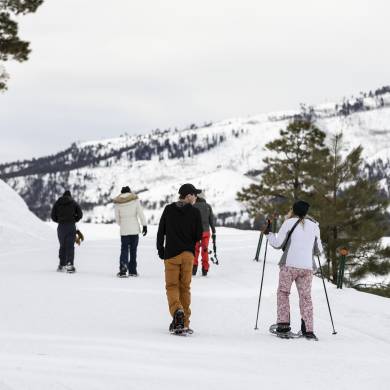Summer storms can roll in fast, and with them comes lightning, which can be a real danger when you are in the mountains. Whether you are hiking, summiting mountains, biking, fishing, or enjoying the scenery of the San Juan Mountains, it’s important to know how to stay safe when storms start to roll in.
Lightning can strike miles from a storm, and it’s not something to take lightly. This quick guide covers the basics of lightning safety, safe practices, and more. Keep yourself, your friends, and your adventures safe by being alert and aware of lightning.
Where is Lightning Danger?

During the latter half of summer, afternoon storms will roll into Durango during what is referred to as monsoon season. In the high country, lightning is a serious threat, especially above treeline, where there is little to no shelter. Thunderstorms build fast in the mountains and can appear with little warning.
Lightning tends to strike the highest point around, which can mean exposed ridges, peaks like the top of the iconic Engineer Mountain, or even you. Every year, hikers, bikers, and backpackers are caught off guard and put in dangerous situations. To avoid putting yourself and others in harm's way, stay alert, start early, and know when it is time to turn around.
How to Prepare for Lightning:

Lightning Position.
If you find yourself caught in an exposed high country area during a lightning storm, it is important to know the proper lightning position. The National Parks Service first advises you to get off of elevated areas and to shelter for at least 30 minutes after you hear the last sound of thunder. If you need to assume the lighting position, crouch down on the balls of your feet. Do not lie down; you are trying to minimize the surface area that your body is contacting the ground.
If you can, sit on top of your backpack to reduce direct contact. After you have found a crouching position, you can hold for at least 20-30 minutes, put your hands over your ears, and lean forward.
Optimal Summit Times.
In the mountains, early birds stay safe.
It can be hard to wake up so early in the morning, but when you are looking to summit a mountain, your safest bet is to start early. Afternoon thunderstorms are common during the summer and develop around 12-2 p.m.
By planning to be off summits and ridgelines by 11 a.m., you decrease the risk of being caught in an afternoon thunderstorm. A good rule of thumb is to always check the forecast before you start and to turn back if clouds begin to build. No matter how far away the storm seems, it is still a risk.
Be Aware of the Warning Signs.
It can be a blast summiting iconic mountain peaks in the La Plata Mountains and San Juans. But it can also be full of lightning blasts if you don't keep an eye out for storms. When you look out on the horizon, watch for dark, towering clouds, and if you feel increasing winds and a sudden drop in temperature, it is time to turn around.
Distant rumbles of thunder mean that lightning is already nearby and that it is time to get to a lower elevation. If you feel tingly and your hair is standing on end, seek shelter. If you can’t do so, assume the lighting position.
Conductive Materials.
Sometimes camping in high elevation or exposed areas can put you at risk during a lightning storm. If you find yourself camping on a mountain and there is a risk of lightning, get out of your tent. The metal poles in the tent might attract lightning and put you at risk. Next, try to find a shelter in a grove of trees and assume the lightning position.
If you find yourself caught in a storm while recreating in the high country, abandon your hiking poles, bikes, climbing gear, fishing rods, and metal frame backpack. Place them at least 100 feet away. When storms threaten, seek shelter, get lower, and assume the lightning position.
Getting Downmountain
Lightning on mountain summits can be dangerous and quick. If you spot a storm rolling in, don’t wait. Head down the mountain right away, and if you can, shelter in your car. If you can’t get to your car shelter in ditches or below treeline at a lower elevation.
Avoid open fields or standing near lone trees. While heading down, stay away from metal structures and anything water. Water is a conductor of lightning and can be dangerous even at lower elevations. Start descending the minute you become aware of a thunderstorm. The mountain peak will always be there at the summit, but if you don’t take precautions, you might not be.
Communication Devices:
No wifi calling in the Weminuche Wilderness.
When you’re out exploring Durango’s mountains, trails, and lakes, having a way to communicate can save your life. Cell service isn’t always reliable in remote spots, so it is smart to bring along a satellite messenger or personal locator beacon. These can send your location and call for help if needed.
Don’t have one? Check if you will have service before you go, or ask to borrow one from a friend. Backcountry Experience also rents out beacons and satellite messengers. Know how to use the devices before you go, because when you need them, they matter.
Conclusion

Lightning can be scary, but a little know-how goes a long way in keeping you safe while you’re out enjoying Durango’s incredible outdoors. By paying attention to the warning signs, knowing when to turn around, and having a plan, you can keep yourself and others safe. No matter if you are hiking, camping, or just hanging out, respecting thunderstorms keeps your adventure fun and worry-free. So stay alert, trust your instincts, and enjoy all the moments in the mountains, safely.




